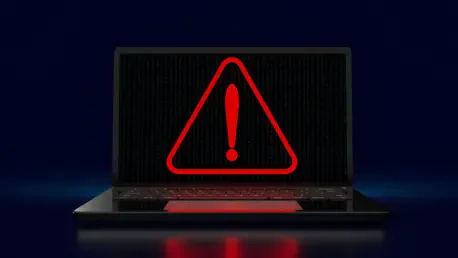With cyber threats becoming increasingly sophisticated, maintaining the security of network infrastructures has never been more vital. Cisco’s Identity Services Engine (ISE) plays an essential role in safeguarding IT environments. However, recent reports of vulnerabilities raise significant concerns. Understanding the nature of these vulnerabilities, their ramifications, and the measures Cisco has taken toward mitigation is crucial for stakeholders across various sectors.
Scrutinizing Cisco’s Identity Services Engine
Cisco’s Identity Services Engine is a central element in network security today, offering comprehensive security policies, access controls, and real-time threat detection. Over the years, ISE has evolved to address the ever-growing demands of cybersecurity, integrating more robust frameworks and advanced machine learning algorithms. Its ability to adapt to dynamic networks makes it a crucial tool for organizations aiming to manage complex IT environments.
In the realm of cybersecurity, Cisco’s ISE is at the forefront, effectively identifying threats and securing resources. As cyber threats continue to diversify and grow in complexity, ISE’s features have become more relevant than ever. Its evolution illustrates a response to the shifting paradigms in the cybersecurity landscape, making it indispensable in the quest for secure and efficient network management.
Assessing Specific Vulnerabilities
Investigating CVE-2025-20281
A critical issue identified within ISE relates to insufficient input validation, cataloged as CVE-2025-20281. This vulnerability emerged in versions 3.3 and later. It allows malefactors to employ manipulated API requests to execute arbitrary commands with root-level privileges. The potential consequences of this could include unauthorized access and significant data breaches, highlighting a severe risk for enterprises relying on ISE for network security.
The flaw, with its ability to compromise system integrity, underscores the constant threats posed by inadequate input validation. It serves as a stark reminder of the importance of rigorous security measures. Exploiting such vulnerabilities could lead to disruptive and costly cyber incidents, emphasizing the need for immediate remedies and preventive action.
Exploring CVE-2025-20282
Another alarming vulnerability, CVE-2025-20282, affects version 3.4 of Cisco’s ISE. This flaw centers on deficient file validation procedures, possibly allowing attackers to upload and execute harmful files within crucial system directories. Such an exploit grants attackers elevated access, potentially leading to unauthorized control over critical systems. The ramifications for businesses could be devastating, with the risk of data loss and operational disruptions.
This file validation flaw has drawn attention to the increasing challenges software vendors face in preemptively closing security gaps. The vulnerability’s existence points to the need for enhanced security practices to uphold system protection, reinforcing the importance of prompt and adequate patch deployments.
Recent Trends and Insights in Cybersecurity
Emerging cybersecurity trends reveal an increasing focus on input and file validation. This focus stems from numerous reported vulnerabilities across various platforms, including those within Cisco’s technologies. The cybersecurity community collectively emphasizes that addressing these weaknesses is crucial to bolstering network defenses against cyber adversaries.
Collaboration among industry specialists has proven invaluable in identifying vulnerabilities and developing effective solutions. Partnerships between organizations, research institutions, and security agencies facilitate information exchange, ultimately advancing collective security measures. Collaborations such as these are pivotal, forming the backbone of contemporary cybersecurity strategies.
Practical Applications and Industry Impact
Industries like healthcare, finance, and telecommunications bear significant impacts from ISE vulnerabilities. For instance, in healthcare, unauthorized access could compromise sensitive patient data, while financial institutions might face substantial financial and reputational damage. Additionally, telecoms fear potential network outages and data thefts.
Consequently, organizations across sectors have embraced Cisco’s patches as part of their cybersecurity arsenals. Implementing these updates helps mitigate risks associated with identified vulnerabilities, protecting organizational data and ensuring business continuity. These successful applications of Cisco’s security measures demonstrate the efficacy of prompt vulnerability management in real-world scenarios.
Addressing Challenges in Mitigation Efforts
Cisco encounters numerous obstacles in effectively addressing security vulnerabilities, from technical complexities to stringent regulatory requirements. Identifying and rectifying each flaw demands considerable resources and expertise, with an aim to ensure minimal operational disruption.
Ongoing efforts to enhance Cisco’s security involve reinforcing existing protocols and developing innovative features designed to detect anomalies accurately. These initiatives reflect Cisco’s commitment to maintaining the highest level of security, ensuring robust defenses against evolving threats.
The Future of Cisco’s Security Enhancements
Looking forward, advancements in artificial intelligence and machine learning hold promise for bolstering Cisco’s security measures. By integrating these technologies, Cisco aims to enable proactive threat identification and rapid response capabilities, significantly fortifying its network defense mechanisms.
Expected breakthroughs in fields such as quantum computing and blockchain might transform how cybersecurity threats are approached, impacting strategies and methodologies employed by organizations. For Cisco, leveraging these technologies can provide a competitive edge, offering cutting-edge security solutions that address both current and future challenges.
A Comprehensive Perspective on Cisco’s Efforts
Cisco’s continuous assessment and mitigation of vulnerabilities reflect its proactive stance in the cybersecurity domain. Its focus on fortifying network security by addressing known vulnerabilities highlights Cisco’s robust security commitment. As new threats emerge, Cisco’s preparedness and ability to adapt remain pivotal to maintaining secure and resilient IT infrastructures.
The lessons drawn from these vulnerabilities underscore the importance of implementing timely updates and staying vigilant. For organizations, embracing Cisco’s solutions is not merely a theoretical exercise; it means actively participating in creating secure environments, ready to tackle cybersecurity challenges head-on.









